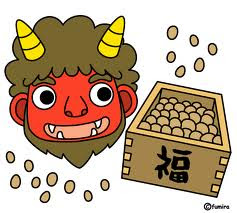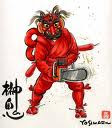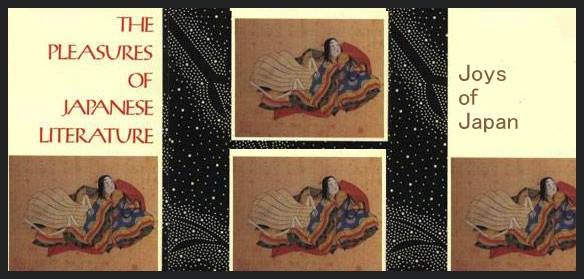:::::::::::::::::::::::::::::::::::::::::::::::::::::::::::::::::::::::::::::::::::::::::::::::::::::
St. Patrick's Day
***** Location: Ireland, worldwide
***** Season: Spring (March 17)
***** Category: Observance
*****************************
Explanation
St Patrick is the Patron Saint of Ireland,
and his feast day on 17 March is a public holiday celebrated with much enthusiasm. St Patrick's Day always falls within the season of Lent, and for those who keep the fast, it is a day of respite, when the fast may be broken before (hopefully!) being resumed until Easter Eve.
St Patrick's Day is a day of great celebration in all Cathedrals and churches named after St Patrick (foremost among them being St Patrick's Cathedrals of Downpatrick and Dublin) as well as the places most closely associated with the life of St Patrick, such as Slane and Tara (where St Patrick is said to have lit the Easter Fire -- an event which directly led to the Christianisation of Ireland).
Nowadays, St Patrick's Day is also associated with greeting cards, parades, and public firework displays -- as well as with American celebrations, which include green beer, green rivers, gigantic green hats and celebrations in the White House (attended by numerous Irish politicians and VIPs).
Isabelle Prondzynski
:::::::::::::::::::::::::::::::::::::::::::::::::::::::::::::::::::::::::::::::::::::::::::::::::::::
Apostle of Ireland, born at Kilpatrick, near Dumbarton, in Scotland, in the year 387; died at Saul, Downpatrick, Ireland, 17 March, 461.
.. .. .. .. .. More is here:
http://www.catholic.org/saints/saint.php?saint_id=89
:::::::::::::::::::::::::::::::::::::::::::::::::::::::::::::::::::::::::::::::::::::::::::::::::::::
Prayer for St Patrick's Day :
Almighty God,
in your providence you chose your servant Patrick,
to be the apostle of the Irish people
to bring those who were wandering in darkness and error
to the true light and knowledge of your Word:
Grant that walking in that light
we may come at last to the light of everlasting life;
through Jesus Christ our Lord.
Amen
:::::::::::::::::::::::::::::::::::::::::::::::::::::::::::::::::::::::::::::::::::::::::::::::::::::
St Patrick - the story
St Patrick was born a Briton under Roman rule - the exact location of his birthplace isn't known but it was either the north of England or southern Scotland.
In his teens he was kidnapped and brought to Ireland as a slave by Niall of the Nine Hostages, a famous king of Ireland whose son Laoghaire was later to play a large part in Patrick's mission to convert Ireland to Christianity.
Patrick was taken to Antrim where he was sold to a local landowner, Meliuc, who put him to work as a shepherd.
For six long years Patrick lived upon the Slemish mountain with only his sheep for company. The land was bleak and the conditions harsh but Patrick found solace in the faith that his people had abandoned under Roman rule. He prayed day and night to the Christian God who brought him comfort during this time.
One night he heard a voice calling to him, telling him that the time had come to escape. It told him, "See, your ship is ready." Patrick knew that he had to travel south to seek the ship God had told him of. He travelled for 200 miles until he came to Wexford where, sure enough, a boat heading for Britain was waiting.
Patrick approached the captain, who at first denied him passage. He turned away, praying for God's guidance. Before he finished the prayer he heard a member of the crew calling to him to come with them - they had changed their mind and could provide him with safe passage home.
Patrick did not seem destined to have an easy life - when travelling home through Britain he was captured by a band of brigands, who returned him to slavery. Desperate, Patrick heard God's voice reassuring him that, "Two months will you be with them."
Sure enough, after sixty days in their company, God delivered him from their hands. Patrick then spent seven years travelling throughout Europe trying to determine what his purpose on earth was. Eventually he came to the conclusion that he should study to become a true servant of God, taking his message throughout the world.
He first studied at the Lerin Monastery, situated on an island off the Cote d' Azur. On completing his studies he returned to Britain as a priest. He remained in Britain until a voice came to him in a dream. He recognised it as the voice of the Irish, which begged him, "We beseech thee, holy youth, to come and walk once more amongst us." At this point, Patrick's purpose in life was revealed to him - he would convert the Irish to Christianity.
This and more here :
http://www.saint-patrick.com/history.htm
xxxxxxxxxxxxxxxxxxxxxxxxxxxxxxxxxxxxxxxxx
Saint Patrick's Day Parades

Contrary to popular belief, this tradition did not originate in Ireland. The first St. Patrick's Day celebration in America was in 1737 hosted by the Charitable Irish Society of Boston. Today festive parades are held all over the world, for no more sinister purpose than raising a glass to the saint and celebrating Irishness.
http://www.ireland.com/events/st.patricks/articles/article4.htm
Read more here:
. Reference : Parades
. . . . .
Greeting cards
The Irish postal services (An Post) issue annual greeting cards and postcards at a standard price including the stamp for anywhere in the world. It has become a custom to send St Patrick's Day greetings to any Irish friends or relatives living abroad. Many of the cards are humorous, and most are received with a sense of joy and nostalgia combined.

St. Patrick's Day Postcard
St. Patrick's Day Postcard, that features the stained glass window depicted on the 2005 stamp.
. http://www.irishstamps.ie/
President's greeting
The President of Ireland issues a St Patrick's Day message and greeting to the Irish abroad, many of whom work abroad in emergency relief or development organisations, or as missionaries or church workers all over the globe.
*****************************
Worldwide use
St Patrick's Day is now celebrated in many parts of the world. Outside Ireland, it is the carnival element that has caught on -- whether it be in the streets of New York or Tokyo, or in the Irish Pubs of Berlin or Warsaw.

Galway's African community shared in the fun;
St Patrick is the patron saint of not only Ireland, but also Nigeria.
*****************************
Things found on the way
QUIZ
So you think you know a lot about Ireland?
Here are 50 questions to test the wits of any would-be hibernophile. Have a go to see if you're guaranteed Irish or simply a plastic paddy.
http://www.irishtimes.com/events/st.patricks/quiz//
:::::::::::::::::::::::::::::::::::::::::::::::::::::::::::::::::::::::::::::::::::::::::::::::::::
KENYA
St Patrick’s Outing, Nairobi 2007
*****************************
HAIKU
rainbow threads arching
shamrock skies and golden coins
St. Pat perfection
St. Patrick symbols
shades of Ireland memories
clover and claddagh
shamrock sentiments
emerald clover conveying
an Irish blessing
Judith A.Lindberg
www.bry-backmanor.org/holidayfun/patspoetry2.html
xxxxxxxxxxxxxxxxxxxxxxxxxxxxx
Anti-War Haiku Wall Spring Haiku—2003
Mark Johnson (USA)
somber St. Patrick’s—
winter-weary New Yorkers
brace for spring attacks.
www.tempslibres.org/awhw/seq/seq04.html
xxxxxxxxxxxxxxxxxxxxxxxxxxxxx
St. Patricks-day
the festive parades
for peace
Geert Verbeke
http://happyhaiku.blogspot.com/2004/01/friends-geert-verbeke.html
:::::::::::::::::::::::::::::::::::::::::::::::::::::::::::::::::::::::::::::::::::::::::::::::::::::
St. Patrick‘s Day –
not knowing any better,
lambs dance a set
Paddy Bushe
(Ireland – transl. from the Irish by the author and Anatoly Kudryavitsky)
From Shamrock Haiku Journal No 2, 2007.
:::::::::::::::::::::::::::::::::::::::::::::::::::::::::::::::::::::::::::::::::::::::::::::::::::::
St. Patrick's Day
to be or not to be Irish
is that the question?
Chen-ou Liu
Canada, 2011

Artwork: Constanta Erca, Haiku composition: Ioana Dinescu
:::::::::::::::::::::::::::::::::::::::::::::::::::::::::::::::::::::::::::::::::::::::::::::::::::::
From Don Baird, USA :
Originally, when St. Patrick was on his mission trips to Ireland he would use the Shamrock (three leaf clover) as a symbol of the trinity. It was his visual aid in regards to the Father, Son and Holy Spirit.
St. Patrick’s Day –
a tavern’s three cheers
for the shamrock!
. . .
Blue was the original special color of the day. It wasn't until much later that green took it over. Most probably it occurred as a result of St. Patrick using a green leaf to explain the trinity. So, if you wore blue today, you would be pinched in jest! Tomorrow, it might be enough green to keep you from being pinched. But, sorry ... it's too late!
It is a wearing of the green ceremony now.
the wearing of green ...
blue hues of the past
pinched
St. Paddie's ...
yesterday's pinch
green today!
. . .
The St Patrick's Day parade is the largest parade in the world. They have well over a 100,000 participants marching in the parade. The streets are full of spectators and participants combined. The 69th Infantry leads the way by being the first event in the parade. They have been doing that for years!
69th Infantry –
walking the streets
of New York
:::::::::::::::::::::::::::::::::::::::::::::::::::::::::::::::::::::::::::::::::::::::::::::::::::::
St Patrick's Day
I chat with a leprechaun
after the black stuff
St Paddies night
enjoying the craic
and the fiddler's jig
wearing the shamrock
all the wild rovers
sing Molly Malone
Grace Galton
Somerset, England
:::::::::::::::::::::::::::::::::::::::::::::::::::::::::::::::::::::::::::::::::::::::::::::::::::::
St Paddy's Day
annual free for all
of green and black
no more snakes
lots more guinness
Ireland heaves a contented sigh
green grow the rushes
green are Molly's eyes
green sunrise in Ireland
a frenzy of green
a light shower
a golden sunset
Seaview, 2011
:::::::::::::::::::::::::::::::::::::::::::::::::::::::::::::::::::::::::::::::::::::::::::::::::::::
St. Patrick’s Day—
black Irish don’t
wear green
St. Paddie’s Day . . .
hoping for a pinch
or a pat
St. Patrick’s Day—
why must the beer
be green?
Margaret Dornaus, U.S., 2011

:::::::::::::::::::::::::::::::::::::::::::::::::::::::::::::::::::::::::::::::::::::::::::::::::::::
saint Patrick's day..
even the rivers
run green
- Shared by John Byrne -
Haiku Culture Magazine, 2013
St. Patrick's Day -
with songs and beer,
we are all Irish
blagdan sv. Patrika -
uz pjesme i pivo
svi smo Irci
- Shared by Tomislav Maretic -
*****************************
Related words
***** . WKD : Christian Celebrations
***** . WKD : Memorial Days of Saints
[ . BACK to Worldkigo TOP . ]
:::::::::::::::::::::::::::::::::::::::::::::::::::::::::::::::::::::::::::::::::::::::::::::::::::::





























